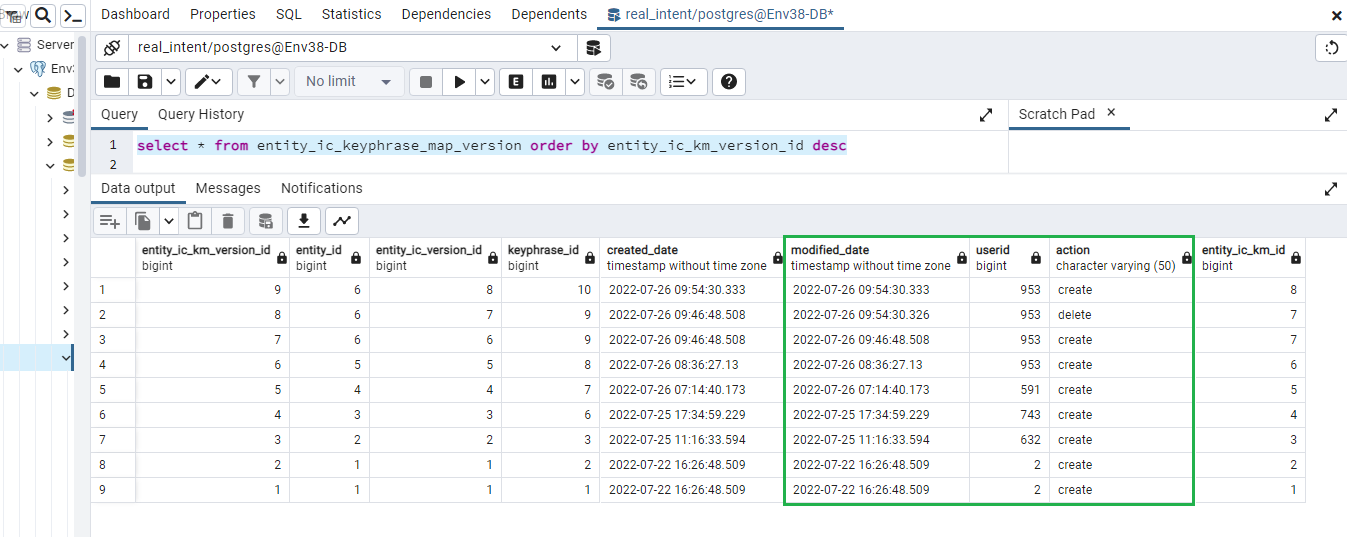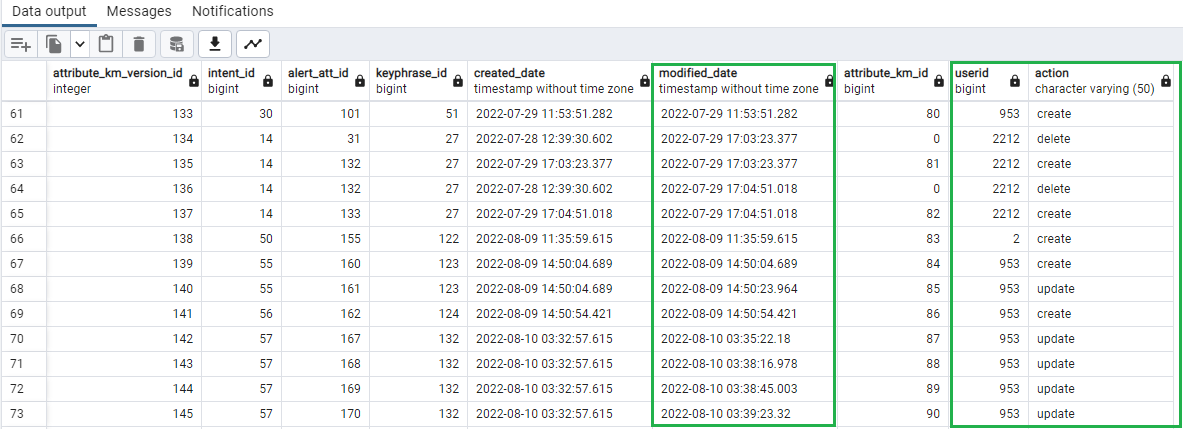User Audit Trails
The User Audit Trail feature helps organizations to monitor data and keep track of potential security breaches or internal misuses of information. The Audit trail which tracks what changes were made, who made the changes and when were the changes made helps in maintaining traceability. The activities and timelines of a Business Analyst and Administrator are captured and monitored that helps organizations to keep track of how and when the actions were performed which is useful for auditing purposes. User Audit Trails are available for a Client for every Organization and Category. Logs are available in the database for the user with role of Business Analyst and Administrator.
The user activity logs include all create, edit, and delete operations.
Action Items | Definition |
|---|---|
Create | Captures new configuration details. |
Update | Captures any modification to the existing configuration |
Delete | captures configuration deletion details |
User Audit Trail – Administrator
When an Administrator creates, updates or deletes an application configuration, including Organization setup and Business Process (Category), and user configuration, these activities are captured in the audit logs output.
Audit Output:
 |
The following values are displayed in Audit logs output:
Date and Time
Organization
Category
Role
User Name
External ID
Email
Module
Action
Parameters
Details
Status
Action Items:
Find the below action items included in audit logs for Administrator role:
Action Items | Definition |
|---|---|
Add | Adding of parameters such as Organization, Category and User |
Edit | Editing of parameters such as Organization, Category, User |
Delete | Deleting of parameters such as Organization, Category, User |
Login | Log into Administrator |
Logout | Log out from Administrator |
User Audit Trail – Business Analyst
When a Business Analyst create, update or delete the configuration of entities, alerts, summary, disposition and promise, these activities are captured along with user ID and timestamp in the database for auditing purposes.
Entity
NLP Entity
The table names that are impacted when creating, editing, or deleting entities are listed below.
Action Items | Table Name |
|---|---|
| entity_version entity_ic_keyphrase_map_version entity_input_component_version entity_output_component_version |
Create, update or delete entity catalogs | entity_catalog_version |
Import AI entity from model | entity_version entity_output_component_version |
entity_ic_keyphrase_map_version
 |
entity_version
 |
entity_input_component_version
 |
entity_output_component_version
 |
entity_catalog_version
 |
Rule Entity
The table names that are impacted when creating, editing, or deleting rule entities are listed below.
Action Items | Table Name |
|---|---|
| entity_version rule_config_version rule_component_version rule_nested_entity_map_version. |
rule_component_version
 |
rule_config_version
 |
rule_nested_entity_map_version
 |
Complex Entity
The table names that are impacted when creating, editing, or deleting complex entities are listed below.
Action Items | Table Name |
|---|---|
| entity_version api_configuration_version |
AI Entity
The table names that are impacted when importing AI entities from model are listed below.
Action Items | Table Name |
|---|---|
Import AI entities from model | entity_version entity_output_component_version |
ACW Summary
For complete details about the ACW Summary Logs, see Release 2023.3.
ACW Disposition
For complete details about the ACW Disposition Logs, see Release 2023.3.
Alerts
The table names that are impacted when creating, editing, or deleting alerts are listed below.
Action Items | Table Name |
|---|---|
| intent_version, intent_attribute_map_version, alert_attribute_version, alert_attribute_group_version, attribute_keyphrase_map_version |
alert_attribute_group_version
 |
attribute_keyphrase_map_version
 |
alert_attribute_version
 |
intent_attribute_map_version
 |
intent_version
 |
Ghost call
The table names that are impacted when creating, editing, or deleting ghost call configuration are listed below.
Action Items | Table Name |
|---|---|
Create, update or delete ghost call configuration through API | ghost_call_config_version |
ghost_call_config_version
 |
CTI Language Engine
The table names that are impacted when creating, editing, or deleting CTI language engine configuration are listed below.
Action Items | Table Name |
|---|---|
Create, update or delete CTI language engine mapping through API | cti_language_engine_version |
ASR Instance
The table names that are impacted when creating, updating or deleting ASR instances in bulk or given language code and engine name through API are listed below.
Action Items | Table Name |
|---|---|
Create, update or delete ASR instances through API | asr_instance_version |
asr_instance_version
 |